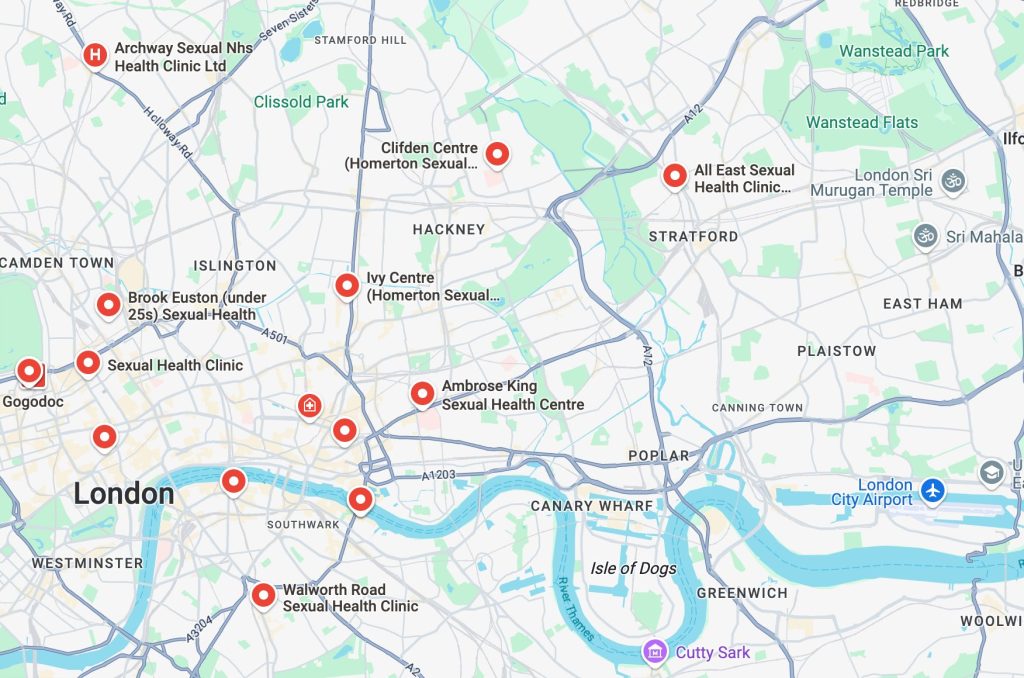Women in London are choosing long-term contraception options such as the coil and the implant at a far lower rate in comparison to the rest of the country, new data from NHS England shows.
The statistics focus on women already using contraception and demonstrate that London has the lowest usage of implants and the coil, collectively known as long term reversible contraception (LARC) with Londoners preferring the pill or the condom.
London’s rate of LARC amongst women using contraception is at just 48%, behind the South East at 50%, while Yorkshire and The Humber lead the way for England at 64%.
Dr Priyanka Patel, a consultant at London Gynaecology said: “Apprehension and anxiety play a part. The coil insertion process can feel quite invasive.
“Some women just don’t like the idea of it.”
Contraception usage is taken for a variety of reasons and there is a large proportion of women who take it for health complications.
Potential side affects also weigh on women’s minds when choosing contraception with different women deciding different risks are acceptable.
Side affects typically associated with the coil can be pain or irregular bleeding compared to the pill which can lead to nausea, mood changes or irregular bleeding patterns.
A sexual health nurse in London who wishes to remain anonymous, said: “If people think side affects are a short-term concern they think it’s acceptable, but the idea that these side affects may persist is scarier.”
Due to the pill being taken orally every day, these side affects can generally be halted quickly by stopping taking the pill compared to having to undergo another procedure to remove the contraceptive device.
Lower uptake of LARC can stem from women finding the idea of a physical object surgically placed inside them unnerving.
The theme of fear regarding LARC is one that appears to be pervasive amongst women.
Patel said: “Health professionals can only control so much information that is going to the patient.”
Patel and the nurse noted that different information streams such as social media and anecdotal evidence can sometimes be a barrier for women receiving the correct medical advice.
The sexual health nurse however said: “People like to fact check things they might have heard through friends or online with a healthcare professional.
“I think that probably is one of the most impactful results of outreach.”
This level of fear however can also extend to non-intrusive contraception such as the pill.
A young woman, who wished to remain anonymous, who has been using contraception since 15, said: “In conversation with my friends, we’d always associate the pill with mental health, mental instability and basically not feeling yourself.
“I don’t want to think that I could’ve missed one or I’ve got to go to the doctor.”
She now uses a hormonal coil which works for her due to the non-repetitive nature of it.
One of the reasons that Dr Patel pointed to as a potential reason for the decline in usage of LARC is recent changes to accessing the pill which is now available over the counter.
Dr Patel said: “Making any form of contraception more accessible must be a good thing.
“It’s not that these short acting methods are poor or bad.
“It’s about as health professionals just reiterating that those methods are only as good as you taking them regularly.”
Emily Aimable, 23, went on the pill when she was just 12 for period pains that left her bed bound and missing school.
She since has stopped taking any form of contraception.
She said: “I don’t think contraception should be used for women’s health. I can’t be on the pill for the rest of my life.
“Being given the pill is just an excuse for lack of investigation into women’s health.”
Emily stopped using the pill due to worries about side effects, she never struggled with the routine of taking the pill as she had taken it ever since she was young.
She is now looking at the coil as it will allow her more control over the hormonal imbalances and the idea of more localised hormones is something that appeals to her.
The coil typically means that the hormones emitted are localised compared to a pill which can dissipate all over the body.
Alice Robinson, 23, has recently looked at getting the coil and said: “It’s something which is really unnatural, it’s just shoving a piece of metal up somewhere it shouldn’t go.
“For that reason I just refuse, unless it’s done under anaesthetic.”
Anaesthetic is an issue that arises repeatedly with it often being more difficult to access on the NHS than privately.
Dr Patel said she always offered her patients the choice of anaesthetic with an aim of making them feel more comfortable.
More suburban areas of London have a higher usage of LARC with Havering at the top at 65% and Richmond-upon-Thames just behind at 64%.
Harrow lies in last at just 39% preceded by Lewisham at 41%.
The map above shows income deprivation among London boroughs in terms of people receiving means tested benefits with the darker areas showing less support received.
The best ranked boroughs are Richmond-upon-Thames and Bromley which aligns with the higher usage of LARC in these same areas.
The comparison between the maps demonstrates a potential correlation between the less deprived an area is, the more likely women are to use LARC.
One area which bucks this trend is the North East of London, in areas such as Tower Hamlets and Hackney.

This could be explained through a high density of sexual health centres in more central areas of London leading to wider access available for residents for consultations and appointments.
In fact, London leads the way in sexual health consultations across the country which suggests whilst access or economics may be a factor, there are also more options available to women than ever before.
Moreover, 8% of Londoners use sexual health clinics with highest usage between 20-24 year olds and 25-34 year olds compared to just 5% across the country.
Therefore the large gap between London and the rest of the country is not as a result of people not using these services but women making different choices in London.
As the pill becomes more readily available and people become more aware of their own choices available to them, Patel doesn’t see this as an issue but rather a strength.
None of the professionals spoken to were able to specify exactly what was bringing these numbers down in the capital.
Featured Image – Unsplash free to use





